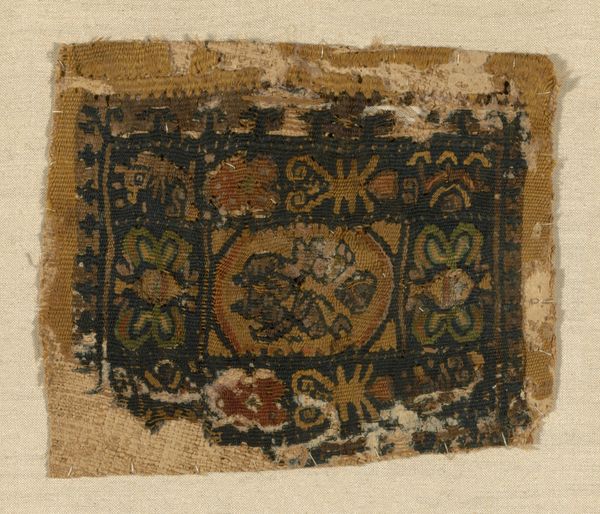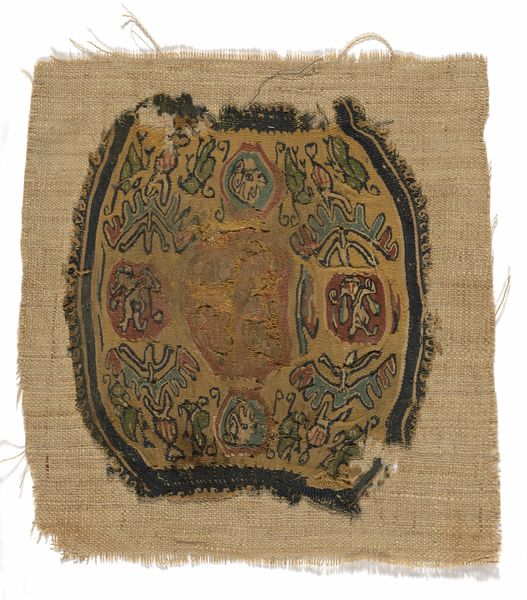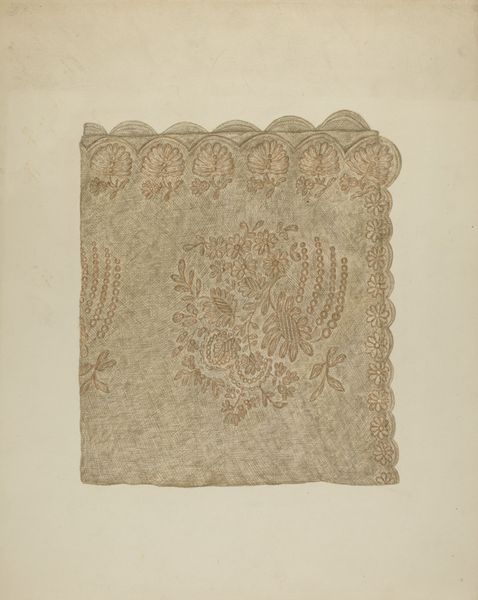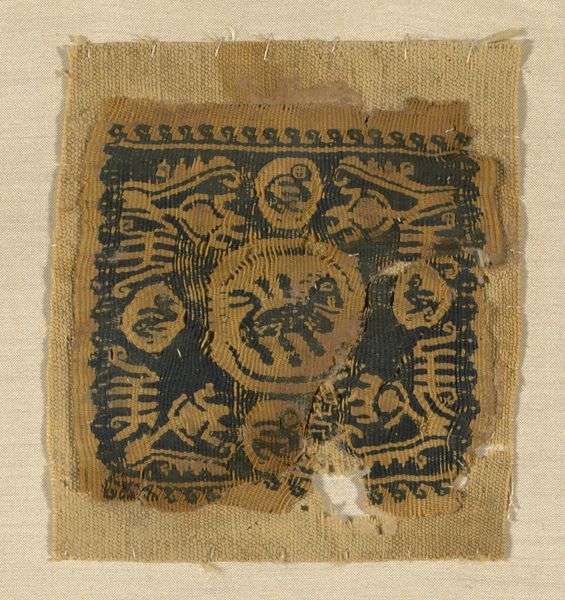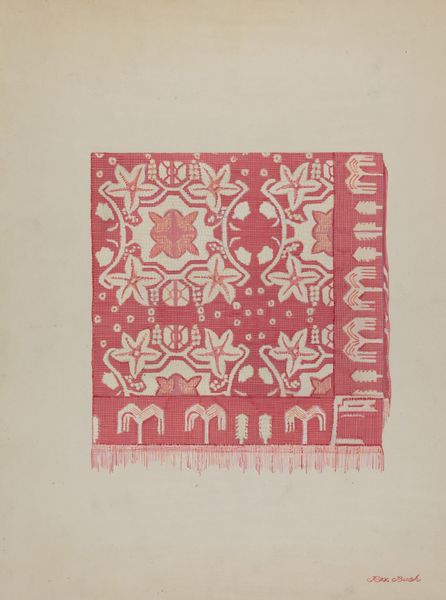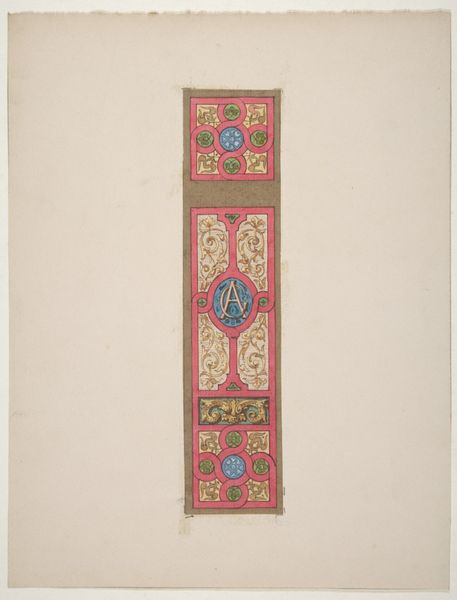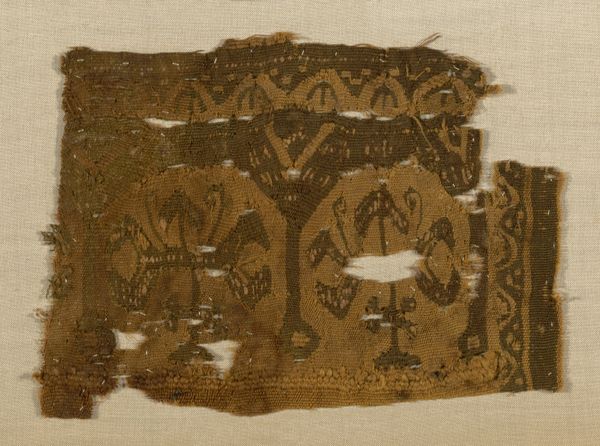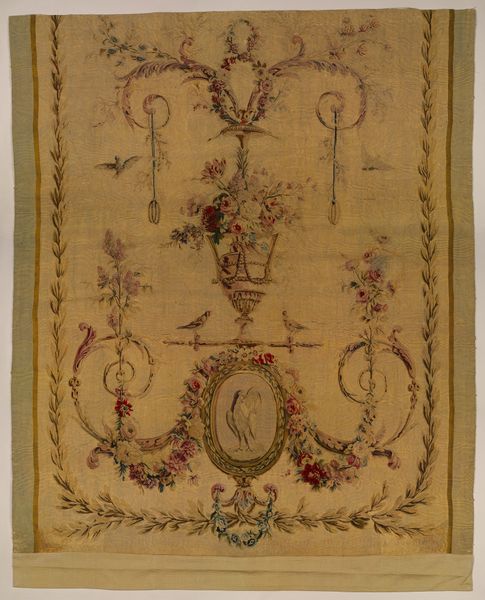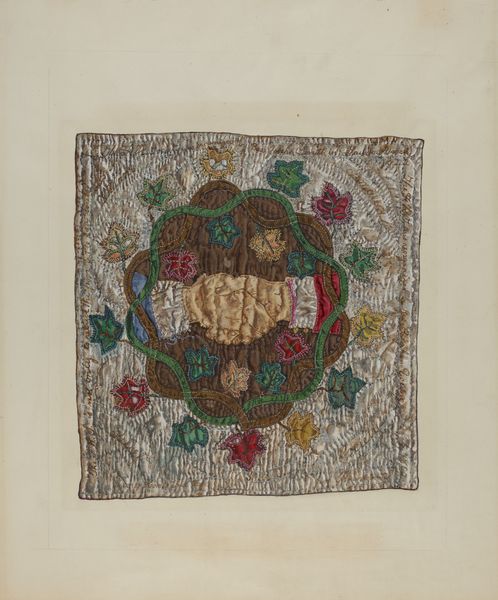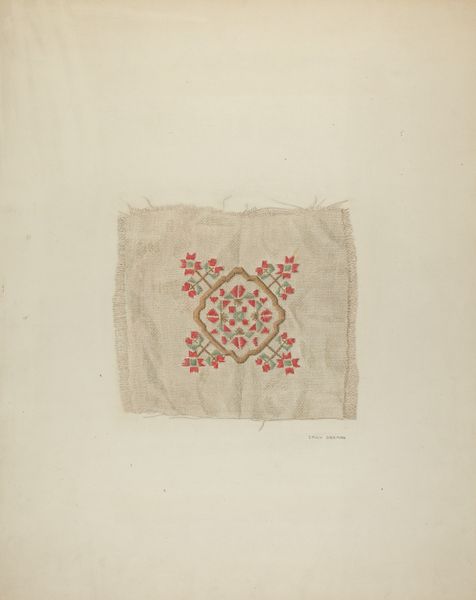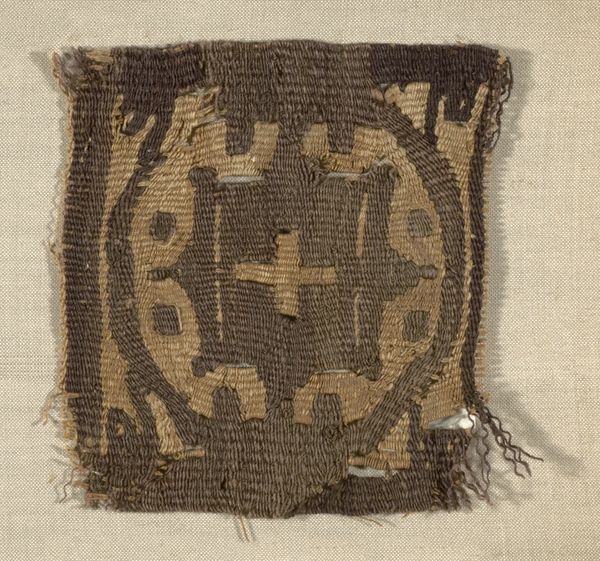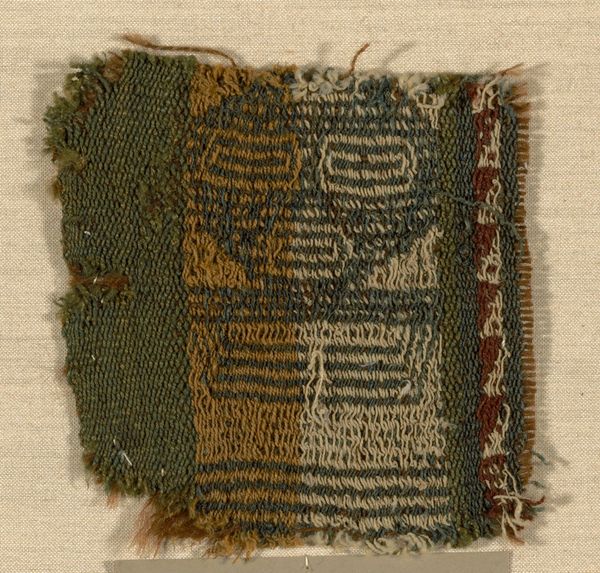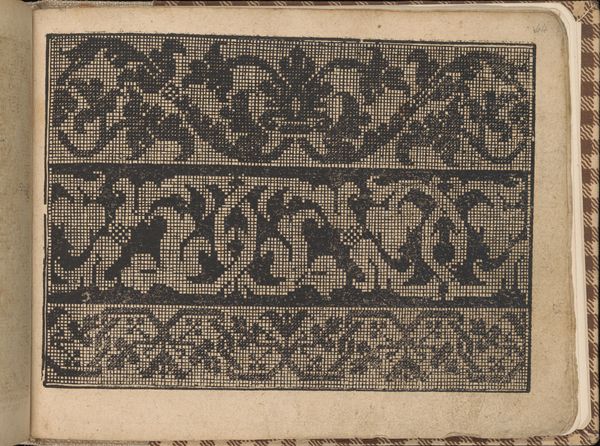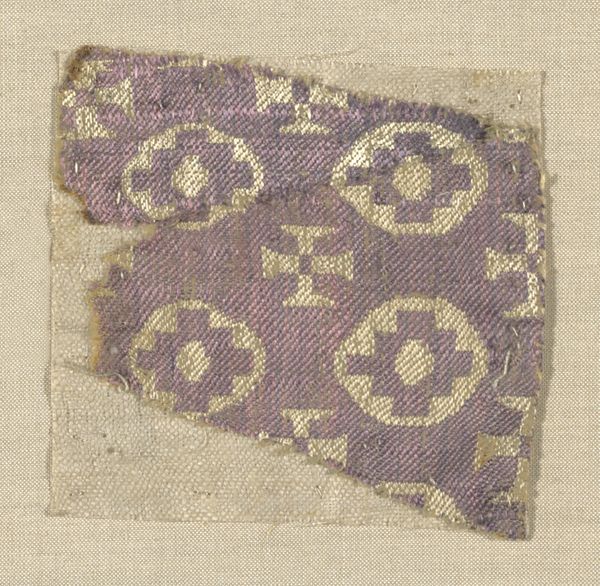
mosaic, fibre-art, weaving, textile
#
mosaic
#
fibre-art
#
weaving
#
textile
#
geometric
#
ancient-mediterranean
#
islamic-art
#
decorative-art
Dimensions: 25.5 × 26 cm (10 × 10 1/8 in.)
Copyright: Public Domain
This textile fragment, made by Coptic artisans, displays a series of circular motifs containing stylized floral and vegetal forms. These symbols, echoing the Tree of Life, are not merely decorative; they represent regeneration and the cyclical nature of existence. Consider how the vase or basket motif at the bottom, brimming with foliage and fruit, resonates with similar imagery found in ancient Minoan frescoes. These are not isolated instances, but rather points on a continuum of shared human expression. The persistent reappearance of such symbols speaks to a deep-seated collective memory. Reflect upon the emotional power of these images. The Tree of Life, for example, taps into our subconscious desires for renewal, evoking feelings of hope and continuity. It is through these motifs that art becomes a powerful force, engaging us on a deeply subconscious level. It illustrates that cultural memory is non-linear, perpetually resurfacing, evolving, and taking on new meanings across time.
Comments
No comments
Be the first to comment and join the conversation on the ultimate creative platform.
